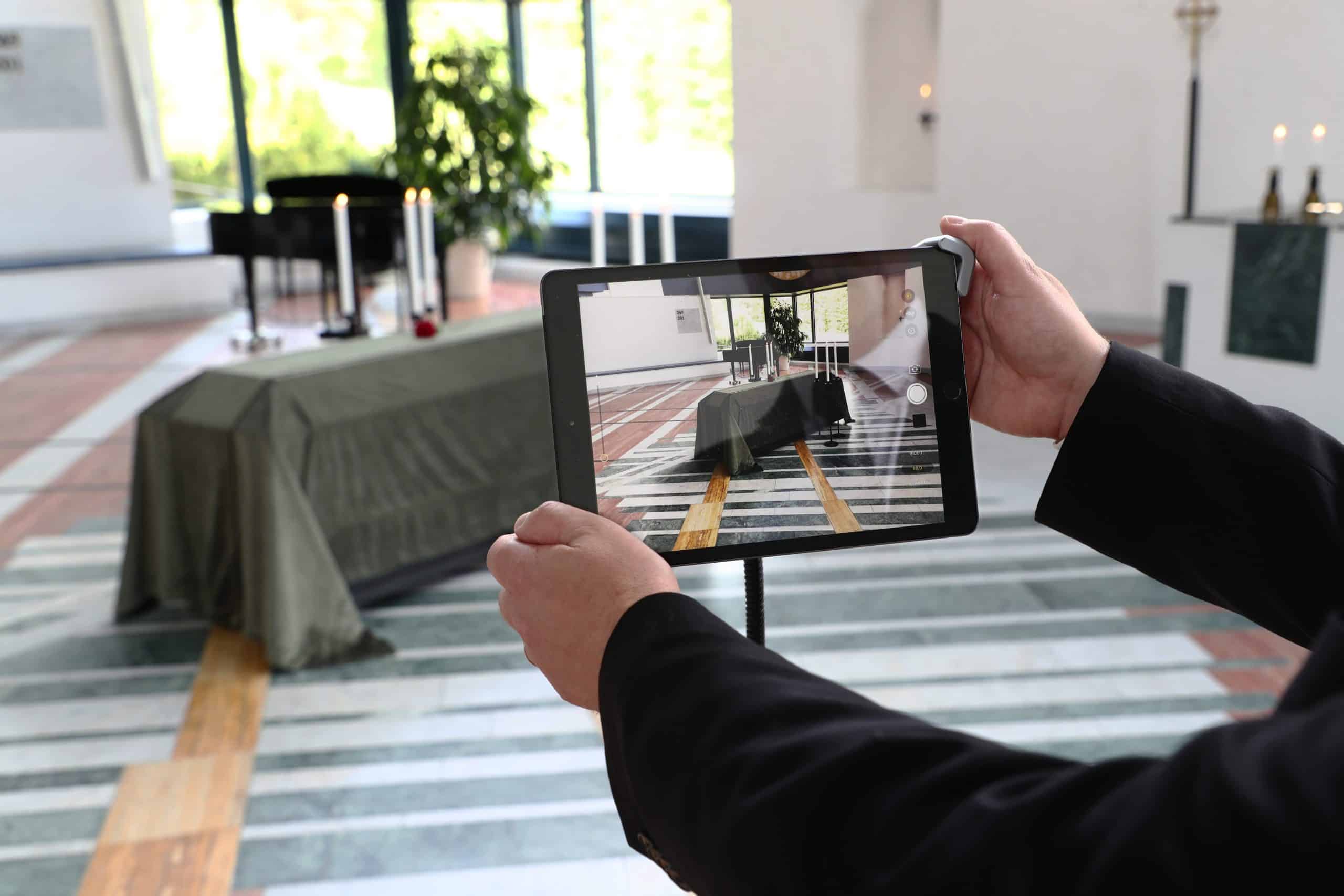If you have experienced a loss, you may be grappling with how to mourn in the digital era. Modern memorials are an important part of the grieving process and often take advantage of digital tools to help the departed’s loved ones process their grief together.
If you’re faced with planning a memorial in the digital age, and you find technology intimidating, it can be overwhelming. Navigating new technologies at a time when you’re not feeling your best is a challenge. However, there’s value in making space for digital mourning at your loved one’s end-of-life service.
Virtual memorial services mean that you can expand the number of people who participate in the mourning process. It also gives you and your loved ones easy, convenient access to photo slideshows or any other digital resources you create. That way, everyone can feel closer to the departed from any location and at any time of day. That’s helpful not only for the day of the service but also for the lonely months that can follow after a death.
Let’s unpack what mourning is and how you can adapt the mourning rituals that humans have relied on for centuries to the technologies of our current moment.
What Is Mourning?
Mourning refers to external expressions of grief that we show in response to any loss. When a death occurs, it’s the process by which we come to understand and process the event collectively. This more social form of grief is differentiated from an individual’s personal, internal emotions and feelings of loss.
There’s no universal or right way to mourn or grieve. Mourning rituals can vary across cultures, times, and places. Additionally, there’s wide variation from person to person in how they process grief and their preferred mourning rituals. There’s also no set timeframe for mourning.
You may never feel as though you are fully healed after the death of a loved one, but grief and mourning are essential steps for living a healthy life. Going through this process can help you work through your emotions about the death and keep you from becoming overly fixated on the event. It’s a meaningful way to take care of yourself and allow your brain to come to terms with what has happened. It’s how you adapt after a tragedy, ensuring that you continue to grow as a person. It’s also part of how you get to the point where you can live a rich and fulfilling life that honors your lost loved one.
How Has the Digital Age Changed Mourning?
As you can see, mourning is an essential part of life, and mourning rituals must reflect the times. Digital mourning has been around almost as long as the digital age, but it really took off during the COVID-19 pandemic when many families had to cope with the double tragedy of the loss of a loved one and the loss of traditional, in-person funeral gatherings.
For better or worse, the internet has created new spaces for public mourning. Here are just a few examples of how people use digital tools to mourn a loss:
- Streaming funeral services
- Online funeral guestbook
- Online grief support groups
- Messages on the deceased’s social media
- Photo slideshows
- Video remembrances
- Online memorial sites
Even if digital mourning feels odd or silly to you, there’s reason to incorporate it into the mourning process for your loved one. Anyone who can’t attend the funeral will be grateful, and you may find yourself returning to the online funeral guestbook or viewing slideshows as you process your feelings.
The informal feel of online settings does pose some challenges. It can sometimes lead to awkward or overly casual expressions of grief. Fortunately, virtual funerals during the pandemic have prompted a helpful discussion about how to use digital mourning tools in more thoughtful ways. Funeral directors and other grief experts are having important conversations about what value digital mourning and what good etiquette looks like. With some planning, you can minimize the risk of this happening and create digital spaces that retain the dignity of in-person mourning rituals.
Adapting to Shifts in Mourning Rituals
These modern updates to mourning are a lot to process at a time when you’re experiencing feelings of loss. Ultimately, it’s your decision whether you use digital tools to mourn. Some people like to use these technologies, but others may not be comfortable.
If the reason you’re hesitant to use these tools is your lack of familiarity with them, that’s an easy fix. When there’s a loss, friends and family are looking for ways to help, and you probably have some tech-savvy people in your life who would be happy to help you incorporate digital mourning into your memorial service. Additionally, a funeral director can help you.
Perhaps the most intimidating form of digital mourning is the streaming funeral service. A lot can go wrong, but with some planning, these services offer many benefits. When you incorporate streaming into a service, you expand the community of mourners, which helps everyone work through their grief more effectively.
If you want to take advantage of digital tools to mourn the loss of your loved one, you can take steps to ensure that any digital memorialization is dignified. Here are a few tips on using new technology to plan a dignified memorial service.
- Pick a host who acts as a “virtual usher” for your streaming funeral service. It’s best to pick someone who is not in mourning and can focus solely on maintaining digital decorum. There’s more to think about with streaming than you may realize, from the microphone to the chat feature to screen-sharing. It would help if you had someone who can dedicate their full attention to ensuring that the digital funeral service is dignified.
- Encourage virtual guests to keep their cameras on. The purpose of streaming an end-of-life service is to expand the community of mourners, and it’s hard for the family to feel connected to online attendees if their cameras are off. Keeping your camera on shows respect to the family and makes the service feel more personal.
- Ask virtual attendees to be present. It’s tempting to multitask whenever you’re attending any virtual event. In the comfort of your own home, it’s easy to fold laundry or prep for dinner while you watch the ceremony. However, an online service deserves your full attention, just like an in-person service, and if you’re multitasking, it is distracting to others.
- Request that online participants dress appropriately. Dress codes help establish a solemn and dignified atmosphere. You can indicate the dress code to your guests in advance and note that you would like in-person and virtual attendees to follow it.
- Set aside time for virtual attendees to share stories. For any funeral, you always have the option to designate speakers in advance or open up the floor to guests who want to share their remembrances. You can include virtual guests in this portion of the service. If you want a specific person to speak or plan to offer everyone time for sharing, let them know in advance. Your moderator can use virtual features to help this part run smoothly. Guests can sign up to speak by raising their hands or requesting time to speak in the chat.
- Consider if the chat feature is appropriate for your service. Online guests may not realize that their comments in chat are visible to everyone, and this could lead to some embarrassing or awkward moments. Even if you avoid a mortifying faux pas, it’s easy for distracting side conversations to occur. You can selectively turn it on during a designated period when you ask online guests to share their memories, but it can be risky to leave it on during the entire ceremony.
If you follow these tips, you can ensure that your virtual service is just as meaningful and dignified as the in-person ceremony.
At The Gardens of Boca Raton, we’re experienced with helping family and friends mourn the loss of a loved one. It is our mission to plan funeral services that honor the lives and rich contributions of the departed. We are experienced with planning virtual, in-person, and hybrid end-of-life services that help people process their grief and mourn together. If you have lost a loved one, contact us today to find out how we can help you plan a meaningful service.

